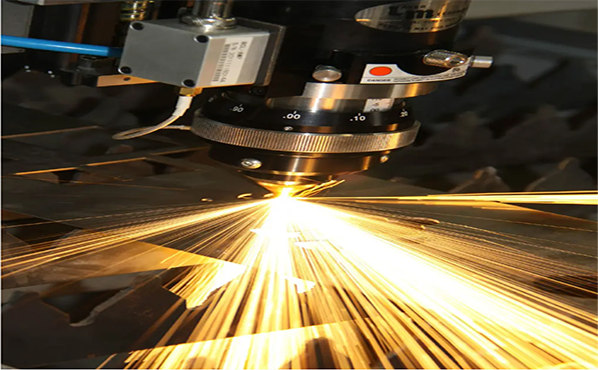Innovative Developments Reshaping the Sheet Metal Fabrication Industry+ View more
Innovative Developments Reshaping the Sheet Metal Fabrication Industry
+ View more
Date:2024-02-02 16:30
The automotive industry has long relied on basic sheet metal for making vehicle components, but the "change in the wind" signified by increasing concerns about carbon emissions and fuel economy has pushed the industry to aluminum alloys and advanced high-strength steels for sheet applications. This doesn't mean the industry has cut back on using steel. Quite the contrary; high-strength steels and aluminum alloys may be a better bet for the industry's future, as either makes not just stronger parts but also lighter ones. "We’re crafting components in a way that achieves not just the necessary precision but also lightweighting," says Chad McMullen, a mechanical engineer at the Campbell Institute of the National Academy of Sciences.
The aerospace industry demands precision, and it begins right here: the manufacturing of intricate structures in sheet metal is the very foundation of aircraft assembly. Whether it is the space shuttle or the B-2 bomber, the aviation requirement is for no errors to be made, even though many sheet metal parts are produced at tolerances that are difficult to maintain. The components must fit together perfectly, and each of them must be both linearly and arithmetically correct in the assembly. Yet most of these parts are produced without an inside-out inspection of how feasible the requirements are. One solution is to use titanium alloy—a lightweight, strong, and corrosion-resistant material. Titan is the biggest single sheet metal component in any airplane. To make an airplane, then, is to make a lot of Titan components.
The construction industry demands durable structures that work functionally, but "form" doesn't have to follow "function" as it once did. Modern architecture is all about aesthetic appeal, and sheet metal happens to lend itself quite well to what Michael Leckie of Leckie Studio Architecture and Design calls the "modern construction paradigm." It's not just that metal withstands the elements. It's that it can be formed to do nearly anything. "Modern buildings of all kinds are using sheet metal," Leckie said, "and to not use it would be an aesthetic misstep."
Sheet metal fabrication is at a crossroads. To keep pace with the sectors it serves—the automotive, aerospace, and construction industries—it must change. These modernizing industries have demand that exceeds what old-line fabrication technology can deliver. They require smart, efficient, and precise manufacturing. Serving these high-tech customers requires no less than a fundamental shift in the design and production of sheet metal parts. That means integrating automation and data analytics to bring about the next-generation surface infrastructure redesign and the digital transformation of part production. The promise of that future, plus recent material science advances, keeps automobile body and airplane wing construction using sheet metal in the conversation for possible fabrication technology breakthroughs.
The aerospace industry demands precision, and it begins right here: the manufacturing of intricate structures in sheet metal is the very foundation of aircraft assembly. Whether it is the space shuttle or the B-2 bomber, the aviation requirement is for no errors to be made, even though many sheet metal parts are produced at tolerances that are difficult to maintain. The components must fit together perfectly, and each of them must be both linearly and arithmetically correct in the assembly. Yet most of these parts are produced without an inside-out inspection of how feasible the requirements are. One solution is to use titanium alloy—a lightweight, strong, and corrosion-resistant material. Titan is the biggest single sheet metal component in any airplane. To make an airplane, then, is to make a lot of Titan components.
The construction industry demands durable structures that work functionally, but "form" doesn't have to follow "function" as it once did. Modern architecture is all about aesthetic appeal, and sheet metal happens to lend itself quite well to what Michael Leckie of Leckie Studio Architecture and Design calls the "modern construction paradigm." It's not just that metal withstands the elements. It's that it can be formed to do nearly anything. "Modern buildings of all kinds are using sheet metal," Leckie said, "and to not use it would be an aesthetic misstep."
Sheet metal fabrication is at a crossroads. To keep pace with the sectors it serves—the automotive, aerospace, and construction industries—it must change. These modernizing industries have demand that exceeds what old-line fabrication technology can deliver. They require smart, efficient, and precise manufacturing. Serving these high-tech customers requires no less than a fundamental shift in the design and production of sheet metal parts. That means integrating automation and data analytics to bring about the next-generation surface infrastructure redesign and the digital transformation of part production. The promise of that future, plus recent material science advances, keeps automobile body and airplane wing construction using sheet metal in the conversation for possible fabrication technology breakthroughs.
Share to:
Recommend wonderful blog posts

